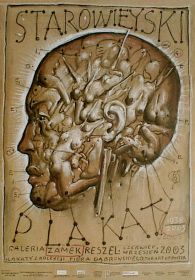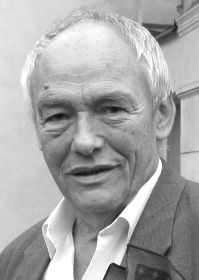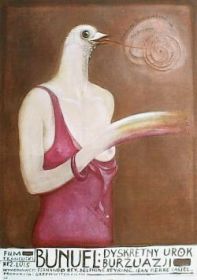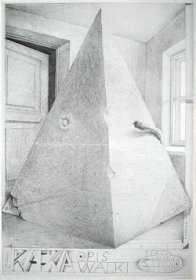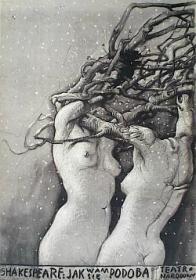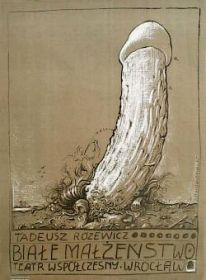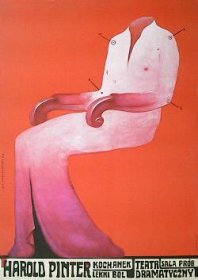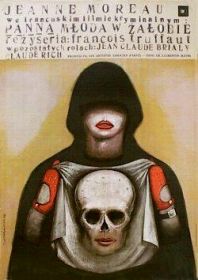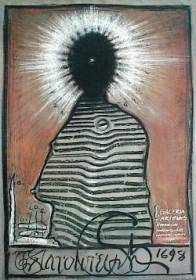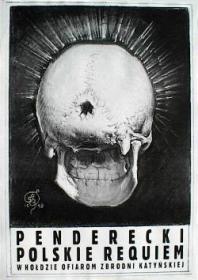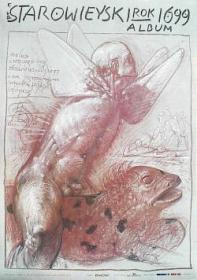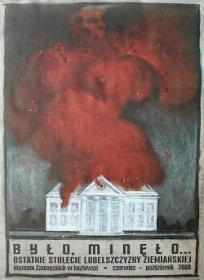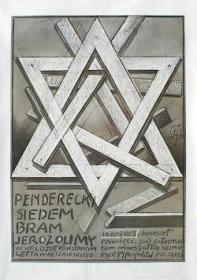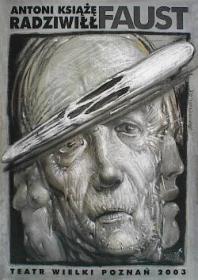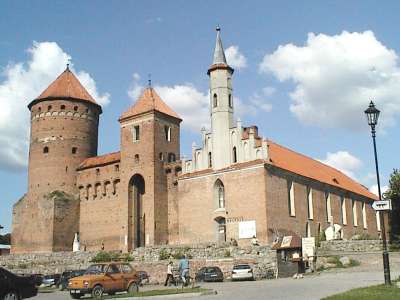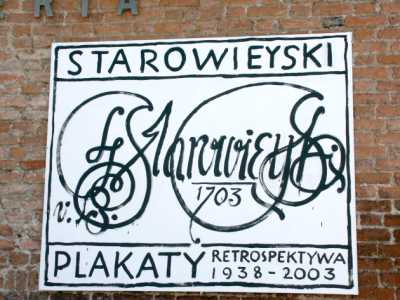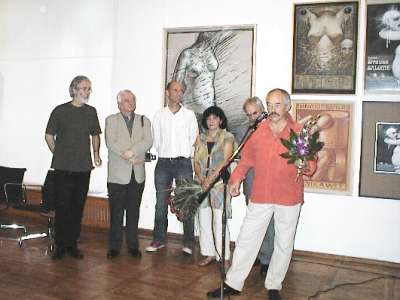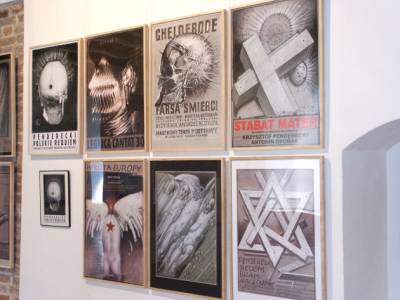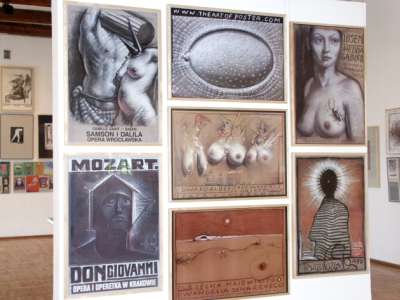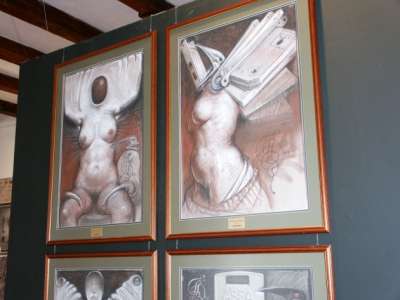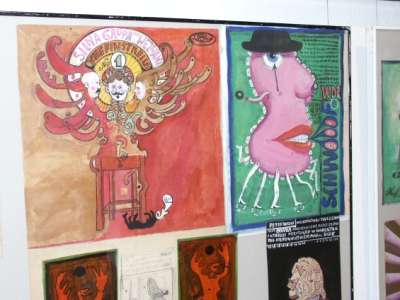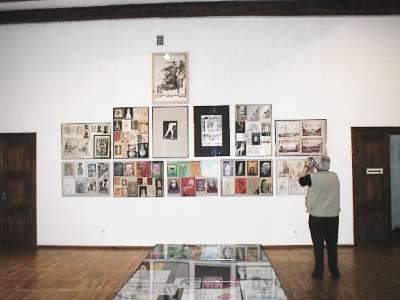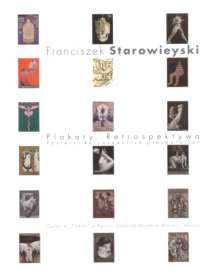The Discrete Charm of Starowieyski
A poster, Polish poster, "Polish School of Poster Design",
affiche polonaise, polnisches Plakat, and as if echoing
those terms: Starowieyski, Franek, "Byk", Starowiej, Franio
- for many years those words have been overlapping,
intertwining, replacing - occasionally becoming almost
synonymous despite lexical differences.
To be more
specific "Franek" does not necessary stand for diminutive
form of Franciszek - it may also signify a poster created by
an excellent artist - bearer of that name. Well, perhaps this
artificial semantic code can be deciphered only by small
circles of poster lovers? - What is quite certain - prints
marked with Starowieyski's name, for nearly 50 years,
were opening an entrance into the world of Polish poster
art, for all those who have been careful enough to notice
"billboards", city walls, and advertising spots of movie-
houses and theatre buildings. Anyway, such experiences
became mine when I was just a teenage boy.
I can still remember those strange emotions, which I sensed
spotting Dyskretny urok burzuazji (Discrete Charm of the
Bourgeoisie) poster, while walking (in 1975) the city streets.
Today I cannot tell, which one of them I saw first - the
fabulous poster or the famous film directed by Bunuel. I
do recall, though, that my imagination was conquered
by the first and not the latter. I got hold of this print
instantaneously, feeling that I HAD to have it! I interpreted
it intuitively, seeking perhaps too many meanings, but at the
same time - freed from thoughts inspired by the film - I was
able to feel pure pleasure just from looking at it, as if it was
a painting, graphic work, or drawing.
Near the house, where I was living at that time, there was
the biggest "poster gallery" in Warsaw, i.e. a very long
wooden wall surrounding so called Blue Skyscraper (a
construction site left unfinished for nearly 25 years). It was
probably there I saw, for the first time, other and equally
splendid works by this great Master, such as Opis walki
(Description of a Struggle) for the theatre performance
based on Franz Kafka's prose, or full of dramatism Jak
wam sie podoba (As You Like It) to Shakespeare's play, or
yet controversial and scandalous Biale malzenstwo (White
Wedding) - designed for the theatre performance by T.
Rozewicz.
At those days I didn't collect posters, but I already had
some of the pieces mounted on the walls of my room - they
simply soothe my eyes. Surely, I was also fond of works by
other artists, which were displayed everyday anew on the
city walls, but Starowieyski was for me the No 1, anyway.
1981 became crucial moment of my life. In this year I started
working in the Graphic and Poster Gallery in Warsaw. I
found this an ideal place for me, where every day gave me
an opportunity to see and marvel at hundreds of works by
various artists.
In those years I got acquainted with early
works by Franek, dating from the 50s, as well as with his
masterpieces from the 60s. Some of those I already knew
from albums, but only when I saw them in proper sizes I
could really appreciate. From then on I got fixed with the
idea of having them all for me. This gallery job helped me
somehow to develop a collector's passion, the real incentive,
though, being the artist's gifts (he co-operated with the
gallery and quite often visited the spot).
Successively, I
collected nearly all of his stuff, although, some of his early
works I still ceaselessly try to find. Every new gain, which I
add to my collection, gives me enormous joy. Starowieyski's
creative output is full of unpredictable twists and mysteries.
- Equally mysterious is actual list of his edited posters. - To
be more precise, it is not quite clear if the original, German
issue of the Die Zoffen poster does really exist, or if it ever
existed as a print? - One has to remember, that not all
created designs, which were sent to editors, found their
way to final prints. Incidentally, during preliminary works
on this present catalogue, several posters - unknown until
now - has been discovered.
Collecting posters by Franek somehow gave me a push
to gather other works by different artists. At present, my
collection contains about dozen of thousand posters from
the years 1899-2003, and yet the Franek's prints are the
very core of it. I always eagerly come back to them. Despite
of the time passing, they are able to evoke enchantment
while seen, and they still inspire my imagination.
My professional activity in the last few years I have carried
on my own (through
The Art of Poster Gallery). It
goes far beyond the task of collecting, as it also covers the
fields of exhibiting, publishing and selling posters.
The international market of art has already discovered
this fascinating Polish poster phenomenon, many years
ago. Works by Starowieyski are among those of highest
esteem and most frequently merchandised. They are being
acquired for the collections of the most important museums,
as well as being put on sales by the best galleries - but first
of all, they are still highly prized by individual collectors.
Normally posters are printed in quite large numbers of
copies (varying from some hundreds to several thousand),
which make them relatively easy accessible to this art lovers.
Alas, that applies to the most recent editions. The earlier
ones, preserved sometimes in scant number of copies, can
reach very high prices. Such posters by Starowieyski as
Zbuntowana orkiestra (Fanfare), Kochanek Lekki bol (The
Lover), A Slight Ache, Frank V, Louis Armstrong (Satchmo the
Great), Teresa Desqueroux or Panna
mloda w zalobie (The Bride Wore Black) have been for
years the objects of desire among poster lovers in the entire
world and, due to the fact, reached prices up to several
hundred times higher than the prices of recent editions.
Well, the real daily life is run mercilessly by money, quite
unlike contact with Starowieyski's works, which enables
us to reach totally different dimensions. The artist's great
power of imagination, his ability to create unrepeatable
charms, perfection of his drawings, sensitivity to colours
and unique style, which doesn't follow crowded paths of
artistic fashion and trends - those qualities allow him to
create masterpieces, which in turn allow me to forget for a
moment the miseries of daily life.
Piotr Dabrowski
